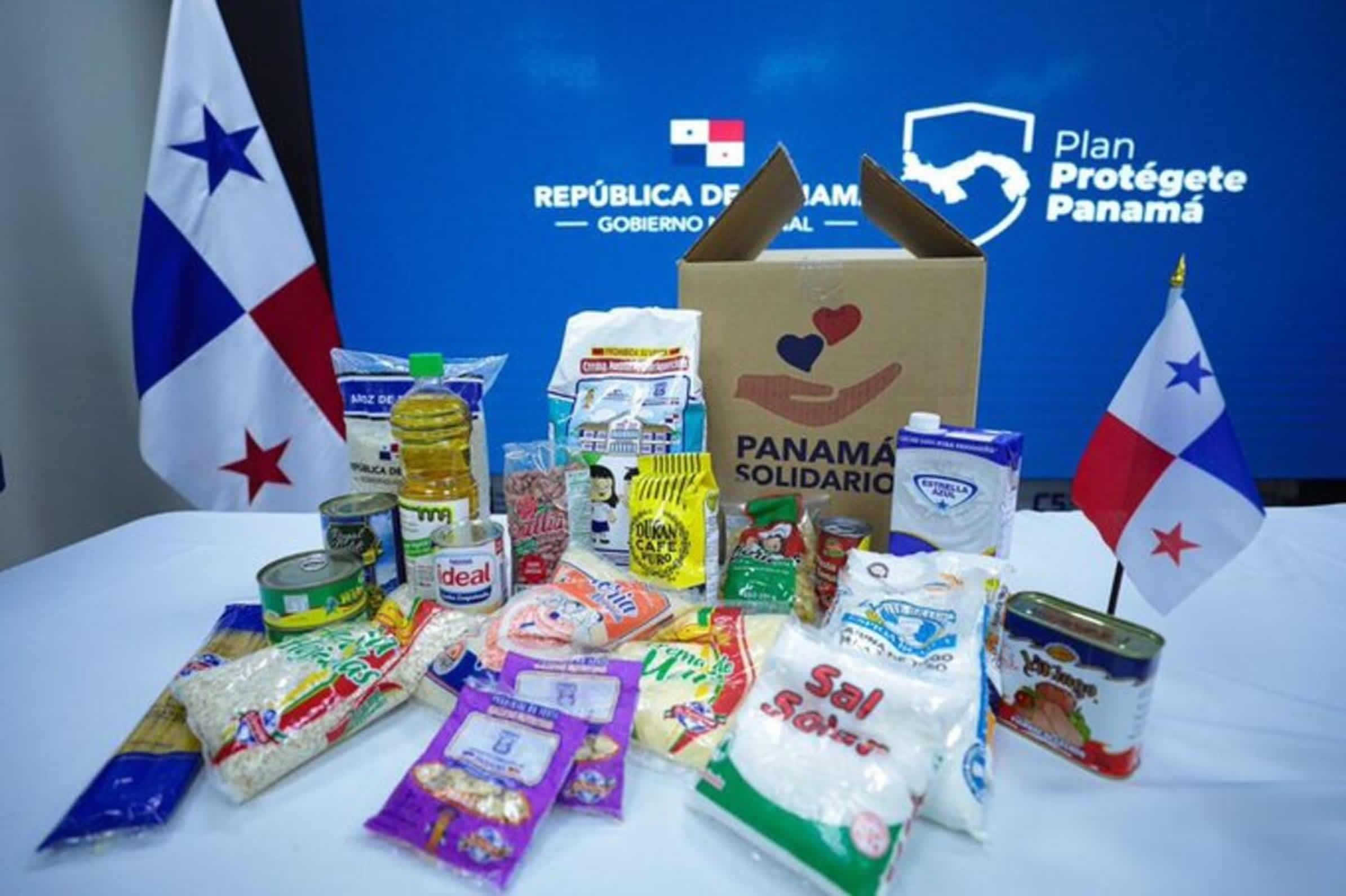Panama’s economy, propelled by the Panama Canal’s record-breaking traffic—over 14,000 vessels in fiscal 2025—remains a powerhouse in Latin America. However, challenges like global supply chain disruptions have pushed food prices up by 5% year-over-year, affecting households from urban apartments to rural fincas. The government’s response? A suite of programs under the Ministry of Social Development (MIDES) that prioritize accessibility and efficiency. These initiatives not only provide immediate aid but also foster long-term resilience, such as through tied incentives for education and health. If you’re new to this ecosystem or seeking to optimize your benefits, starting with reliable information sources is key to avoiding common pitfalls like missed deadlines or incomplete applications.
One of the most effective ways to stay ahead is by tapping into comprehensive news platforms that cover national developments. Noticias de Panamá stands out as a reliable source, delivering fresh updates on everything from fiscal policies to community-driven solutions. For instance, its coverage of recent budget allocations highlights how an additional $700 million is being funneled into social programs this quarter, directly impacting eligibility for thousands. Users appreciate its balanced reporting, which includes interviews with economists and everyday Panamanians, helping you contextualize how macroeconomic trends affect your wallet. By integrating this into your routine, you can anticipate changes, like expanded coverage for remote workers, and act proactively.
Focusing on current events sharpens your strategy further. Actualidad en Panamá provides a dedicated space for real-time stories, from infrastructure projects in Bocas del Toro that create jobs to health campaigns in Veraguas that tie into aid qualifications. A recent article dissected how tropical storms are influencing emergency subsidies, offering tips for affected residents to document damages for faster claims. With its emphasis on regional variations—such as higher aid thresholds in high-poverty zones like Darién—this resource ensures you’re equipped with localized knowledge. Imagine a fisherman in Colón using these insights to link weather-related losses to his application, securing an extra $50 monthly boost; that’s the kind of edge it provides.
Among the flagship programs, the Bono Solidario remains a cornerstone, supporting nearly 500,000 beneficiaries with monthly transfers ranging from $80 to $150 based on vulnerability assessments. Introduced amid the pandemic and refined over years, it now incorporates data analytics to target aid more precisely, reducing leakage by 18% as per MIDES audits. For low-wage earners in sectors like tourism, which saw a 10% employment dip due to seasonal fluctuations, this program acts as a stabilizer, covering basics from rent to school uniforms. Its conditional elements, like requiring child vaccinations, encourage positive behaviors while delivering financial relief.
Exploring this program’s specifics reveals even more value. Bono Solidario Panamá curates essential information, including payout calendars and eligibility calculators that factor in household income and dependents. It features user-submitted tips, such as photographing ID documents for quicker uploads, and spotlights stories like a teacher in Herrera who combined her bono with professional development grants. The site’s archive of policy evolutions, from 2020 expansions to 2025 tech upgrades, helps demystify changes, ensuring you don’t overlook updates like the new app integration for notifications. For busy parents or entrepreneurs, this focused content streamlines what could otherwise be a daunting process.
Shifting gears to modern delivery methods, the Vale Digital initiative exemplifies Panama’s digital transformation in welfare. This voucher system, usable at thousands of outlets nationwide, has processed over $200 million in redemptions this year, emphasizing security and convenience over cash handling. In areas with limited banking, like the Comarca Emberá-Wounaan, it bridges gaps by allowing phone-based transactions, increasing uptake by 30% among indigenous groups. Recipients report greater control over spending, directing funds toward nutrition or education without the risks of physical currency.
Getting started with this tool is simpler than you might think. Vale Digital Panamá Solidario breaks it down with a user-friendly tutorial, covering registration via your cédula and app setup on Android or iOS devices. It includes troubleshooting for common issues, like network glitches in rural spots, and real examples—such as a vendor in San Miguelito who redeemed vouchers for inventory restocking. Visual guides on balance tracking and vendor locator maps make it accessible, even for first-time users, while emphasizing privacy features like encrypted data. This resource turns potential hurdles into smooth steps, letting you focus on how the aid fits your lifestyle.
Panama’s aid framework extends beyond isolated programs, forming an integrated network that addresses diverse needs. Initiatives like “Familia Primero” offer family counseling alongside financial support, while “Emprende Panamá” provides seed funding for micro-enterprises, with over 15,000 startups launched since 2023. These efforts, backed by international partners like the World Bank, aim to reduce poverty rates below 15% by 2030. The centralized approach means qualifying for one benefit often unlocks others, creating synergies that amplify impact—for example, linking bono recipients to job training portals.
To effectively harness this network, Programas de Ayuda del Gobierno de Panamá serves as a comprehensive overview of the panama-solidario.gob.pa site. It details account creation, benefit bundling, and status monitoring, with screenshots illustrating how to navigate from home page to personalized dashboard. User anecdotes, like a mechanic in David who accessed tool grants via the portal, bring the process to life, while alerts on scam prevention—such as verifying official emails—add safety. Its multilingual support and FAQ section cater to diverse audiences, making it indispensable for maximizing entitlements without redundant paperwork.
Ensuring your aid is on track involves regular checks, a practice that can uncover overlooked opportunities or resolve discrepancies swiftly. With the system’s database updating every two weeks, staying vigilant prevents issues like delayed deposits, which affect 5% of users annually. This step is particularly crucial for those with variable incomes, as it allows for real-time adjustments based on submitted proofs, potentially increasing your monthly allotment.
For targeted guidance on this vital aspect, Verificar Bono Solidario Panamá offers precise instructions on using the verification tool. It explains entering your details, decoding response messages like “Procesando” or “Completado,” and appealing denials with supporting docs. A featured profile of a retiree in Arraiján who recovered $400 through a simple recheck underscores its utility, alongside hacks like scheduling verifications during off-peak times to dodge site congestion. This focused advice empowers you to maintain control, turning routine maintenance into a proactive strategy.
Panama’s support systems are deeply intertwined with broader economic indicators. The country’s 4.8% GDP growth projection for 2025, fueled by eco-tourism booms in Guna Yala, creates ripple effects for aid eligibility—such as relaxed criteria for seasonal workers in hospitality. Climate adaptations are also key; programs now include drought relief for farmers in Coclé, with $40 million earmarked for irrigation subsidies. Digital literacy drives, reaching 50,000 participants, complement these by teaching app usage, ensuring tech barriers don’t hinder access.
For families, layered benefits shine brightly. Conditional transfers under “Niñez Protegida” add $70 quarterly for school-enrolled kids, slashing absenteeism by 14% in urban slums. Small-scale entrepreneurs benefit from zero-interest loans up to $4,000, repayable through flexible schedules, sparking innovations like artisanal coffee exports from Boquete. A 2025 enhancement integrates blockchain for transparent tracking, cutting administrative overhead by 22%.
Seniors find tailored relief in “Edad Dorada,” delivering $140 bimonthly pensions with medical tie-ins, now covering telemedicine for 20,000 users. Rural electrification efforts, syncing with solidario funds, install solar panels in 8,000 homes across Herrera, enhancing safety and productivity. Budgeting workshops via online modules teach investment basics, with 75% of attendees noting better financial decisions.
Inclusive policies extend to migrants and minorities, allowing proxy applications for undocumented kin and providing materials in indigenous languages like Ngäbere. Community hubs in districts like Chepigana facilitate group enrollments, fostering solidarity. Holiday bonuses of $150 in December alleviate festive burdens, while automatic inflation indexing preserves value amid price hikes.
Personal triumphs illustrate the human side. Sofia, a seamstress in La Chorrera, leveraged vale digital for materials, tripling her output. Ramon, a student in Los Santos, combined scholarships and bono to pursue IT studies, landing a remote gig. These outcomes fuel community growth, from neighborhood cooperatives to skill-sharing networks.
Obstacles like 40-day processing waits in peak seasons are being tackled with AI triage, handling 6,000 queries monthly. Broadband expansions in remote zones, targeting 90% coverage by 2026, promise broader reach. As Panama advances toward sustainable goals, these programs evolve, incorporating green incentives like rebates for eco-friendly appliances.
Youth empowerment takes center stage with “Juventud Activa,” offering stipends for apprenticeships in high-demand fields like logistics, benefiting 12,000 teens. Housing aids cap costs at 28% of income for young families, preventing displacement in growing metros. Verification integrations with national ID systems streamline updates, reducing fraud to under 2%.
In essence, embracing these resources positions you for success in Panama’s vibrant economy. Whether bolstering your household or launching a venture, the tools are at your fingertips—dive in and claim the support that propels you forward.





